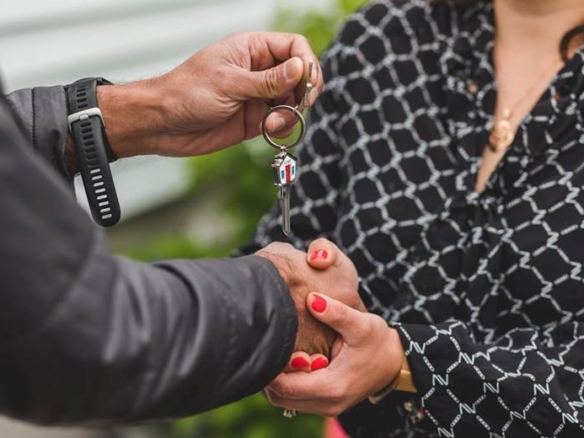Brisbane, the capital of Queensland, offers a desirable lifestyle with its subtropical climate, vibrant cultural scene, and proximity to stunning beaches. If you’re considering buying a home in Brisbane, there are several factors to keep in mind to make the best investment possible. Here are some essential tips to guide you through the process:
1. Research the Market
Before diving into property hunting, it’s crucial to familiarize yourself with Brisbane’s housing market. The city’s property values can vary significantly between different suburbs, so it’s important to understand where to get the most value for your budget. Research trends, compare property prices in different areas, and speak with local real estate agents for the latest insights. Suburbs like New Farm, Paddington, and Bulimba are typically more expensive, while areas like Chermside, Carindale, and Mount Gravatt may offer more affordable options.
2. Consider Brisbane’s Growth Areas
Brisbane is experiencing significant growth in many suburbs, especially with infrastructure projects like the Cross River Rail and Brisbane Metro shaping the city’s future. Suburbs such as Woolloongabba, Albion, and Bowen Hills are expected to benefit from these projects. When choosing your new home, look for areas with ongoing or planned developments that may boost property values over time.
3. Inspect Flood-Prone Areas
Brisbane is no stranger to heavy rainfall and flooding, particularly in low-lying areas. If you’re considering buying in suburbs such as Rocklea, Yeronga, or Graceville, be mindful that these areas are more susceptible to flooding. Always check whether the property is located in a flood-prone zone by consulting Brisbane City Council’s flood maps.
To safeguard your home and property, ensure adequate flood mitigation measures are in place, such as proper stormwater drainage systems and stormwater pits. A reliable stormwater drainage system helps prevent water from pooling around your home, reducing the risk of damage during periods of heavy rain. Consider hiring a professional to inspect for any stormwater blockages or upgrade the drainage systems before purchasing a home in flood-prone areas.
4. Evaluate the Condition of the Home
It’s important to have a thorough inspection of any property before making a final decision. In Brisbane’s humid climate, homes can experience wear and tear due to moisture, pests, or general aging. Hiring a qualified building and pest inspector can help identify any potential issues such as structural damage, termite infestations, or faulty wiring. Make sure to ask for a detailed report and use it as a negotiation tool to possibly lower the purchase price or request repairs.
5. Understanding Brisbane’s Property Zoning and Development Regulations
When buying a home in Brisbane, it’s essential to understand the city’s zoning and development regulations. The Brisbane City Council has specific zoning laws that dictate how land can be used, whether for residential, commercial, or mixed-use purposes. For example, areas zoned as “Low Density Residential” limit the type of property you can build or renovate, while “High Density Residential” zones offer more flexibility for apartment developments.
Additionally, recent changes to Brisbane’s urban development regulations aim to encourage sustainable living and protect heritage sites. Buyers interested in older homes or properties in protected zones must be aware of any restrictions that may affect future renovations or extensions.
It’s also crucial to stay informed about any upcoming developments or rezoning plans in your prospective suburb. These could significantly impact property values, lifestyle, and the community atmosphere in the future. Always consult a town planner or property lawyer if you’re unsure about zoning restrictions or development approvals when purchasing a property in Brisbane.
6. Take Advantage of Government Incentives
Brisbane’s real estate market can offer great opportunities for first-time buyers through government initiatives such as the First Home Owners Grant. These grants provide financial assistance to Australians purchasing their first home, which can help ease some of the financial burden. Make sure you are aware of the eligibility requirements and other incentives that may apply to you, such as stamp duty concessions.
7. Choose the Right Suburb for Your Lifestyle
Finally, when buying a home in Brisbane, it’s important to find a suburb that aligns with your lifestyle. If you enjoy being close to the action, inner-city suburbs like Fortitude Valley and West End offer vibrant nightlife, cafes, and cultural activities. For families, suburbs like Wilston and Camp Hill provide access to parks, good schools, and family-friendly amenities. If you prefer a quieter, more suburban lifestyle, areas like The Gap or Mount Ommaney might suit you better.
Final Thoughts
Buying a home in Brisbane is an exciting journey, but it requires careful consideration of various factors, including market conditions, flood risks, and the property’s structural integrity. Be sure to research thoroughly, conduct all necessary inspections, and plan for adequate stormwater drainage in flood-prone areas. With the right approach, you can find the perfect home that fits your lifestyle and offers long-term value in this dynamic and growing city.





